Arineta , an Isreali firm has designed a system specifically for cardiac imaging by exclusive focusing on heart and and thus offering high resolution, artifact free imaging at a lower cost.
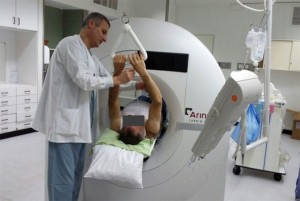
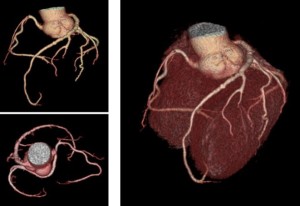
It utilizes twin beam technology to analyse the images and accurately producing 3D images of heart.
Source: Arineta, Israel
Site: www.arineta.com
www.globes.co.il
MRI compatible subcutaneous implantable Defibrillator
Boston Scientific have introduced MRI compatible subcutaneous implantable defibrillator (S- ICD) That will allow the patients to undergo MRI in required indications as well as protect them from cardiac arrest during MRI. The system includes SMART pass technology to improve the accuracy of shock delivery and detect atrial fibrillation and report to cardiologist .
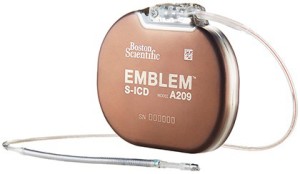
Source: Boston Scientific corporation, US
Site: www.bostonscientific.com
Radius Wireless patient monitor
Masimo has announced a wireless patient monitor device that can be worn on upper arm with an oximeter attached to finger and sensor to the neck allowing the patient to ambulate while being monitored continuosly. The device keeps track of ten parameters including total haemoglobin, SpO2 and pulse rate. It raises alarms at the nurse station in case parameters go beyond the set limits.
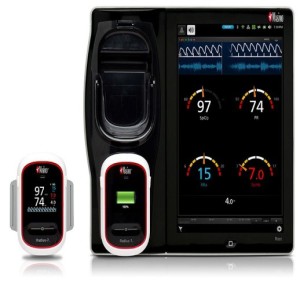
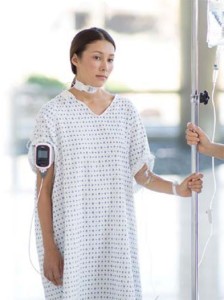
Source: Masimo, Irvine, CA
Site: www.masimo.com
Sequential Contraction Compression device
Flow Aid Medical technology has launched Sequential Contraction Compression Device that uses four electrodes stuck to the skin over the calf on each leg to generate muscle contractions to improve venous return from lower limbs. With compressions, it generates pressure waves within the veins and sequential repetitive nature of the electric current keeps continuous blood flow through the veins.
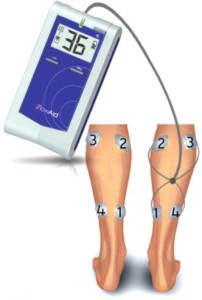
Source: Flow Aid Medical Technology, New York
Site: flowaid.com
Minimally Invasive Peripheral Nerve Stimulator for Chronic and Acute Pain
SPR therapeutics has introduced Peripheral Nerve Stimulation (PNS) System, a minimally invasive and completely removable peripheral nerve stimulator indicated for chronic and acute pain. The device connects to a coiled electrode lead that is implanted percutaneously and is held in place by a patch for up to thirty days. The neurostimulator is about the size of a bandage, and it sends electrical signals toward a target nerve as distant as three centimeters away from the lead tip.
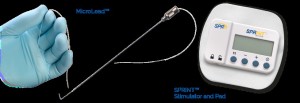
Source: SPR Therapeutics, Cleveland, Ohio.
Site: www.sprtherapeutics.com
CricSpike to Speed Up Cricothyrotomies
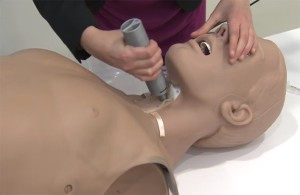
CricSpike has been developed by Johns Hopkins University, a device for performing rapid cricothyrotomies for establishment of an airway, following traumatic battlefield injuries. It speeds up the process and leaves less room for error with the help of a delivery tip that penetrates the windpipe while preventing entry into the esophagus. The device comes with a large, easy to grab handle that is used to position the tip into the incision. It then breaks off to reveal the port through which an endotracheal tube is inserted.
Source: John Hopkin University,
Site: hub.jhu.edu
Compact Ultrasound

Healcerion, has developed an ultrasound system no bigger than the transducer itself. The SONON 300C uses a paired tablet or smartphone of your choice as the display, wirelessly transmitting the data to the smart device from where images can be analyzed and shared with others. It weighs only 13 ounces (360 grams), has a rechargeable lithium-ion battery, and has WiFi connectivity as well and sports 3G/LTE cellular capability. It utilizes convex array transducer.
Source: Healcerion
http://www.healcerion.com/
Smart Urimeter that measures variety of Parameters
The Accuryn catheter utilizes the urine drainage catheter in ICU patients to extract real time data on patient urine output, intra-abdominal pressure, and temperature. Filtering the intra-abdominal pressure data can provide the patient’s heart rate, respiratory rate, and relative stroke volume. The system features automatic clearing of the drain line to prevent backups and the associated catheter-borne urinary tract infections, as well as reduce the workload on nurses.The device also connects to in-hospital electronic medical records systems to store data on every patient.
Source: Potrero Medical, San Fransisco
Site: http://potreromed.com/accuryn-system/
sales@potreromed.com
Philips MR400 Patient Monitor for Use Near MRI Machines
Philips has introduced patient monitoring system for patients undergoing MRI. It works much like the monitors found in ICUs, but avoids image degradation and other interference arising from the large nearby magnet. The monitor tracks ECG, heart rate, blood oxygen saturation, CO2 levels, blood pressure, and temperature on a standard interface essentially the same as on patient monitors. It has integerated alarms that can be set for the various parameters to help detect apnea, improper heart beats, and desaturation. It can be used in both adult and pediatric patients while on or off of anesthesia, including those going through cardiac procedures and folks that are under critical care.
Source: www.philips.com/monitoring.




 Facebook
Facebook Twitter
Twitter GooglePlus
GooglePlus Youtube
Youtube